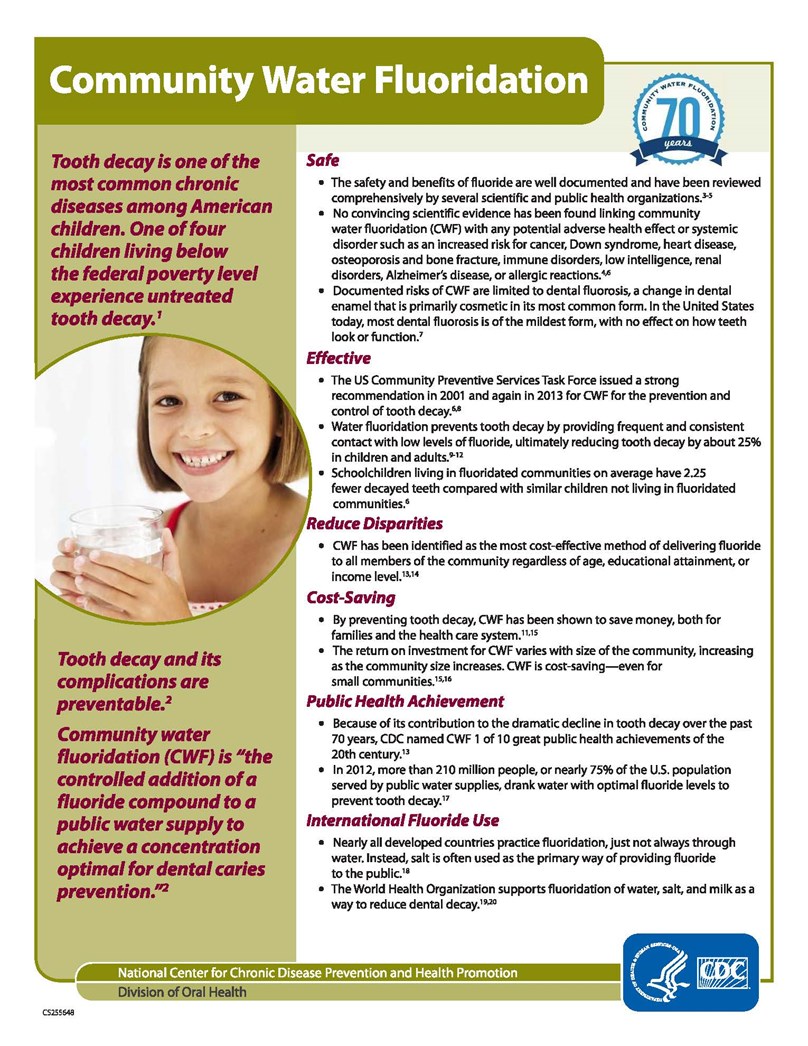| Unusual Taste - Odor - Chlorine | Milky Water | ||
| Concern: The most probable cause is a low chlorine residual due to age of the water which can lead to egg, medicinal, or a fish smell. Even a perceived high chlorine smell can actually be a low chlorine residual due to the breakpoint in the disinfection process. Other causes of odor are dead-end lines, old plumbing, hot water heaters, or kitchen sink odors. | Resolution: Frequently this concern can be corrected if the customer will run water for a few minutes (Using the kitchen or bathroom faucet). If this does not correct the concern, City Employees can flush the water main outside the customer's residence and then the customer can flush inside again. | Concern: The most probable cause of milky water is air in the water lines. This may be caused by water main repair, low pressure, temperature changes, or over-heating of water in the hot water heater. | Resolution: This concern can be resolved by either the customer flushing their water lines (faucets) and /or the city flushing the water main. Check the setting of the hot water heater thermostat and measure the water temperature. Normal setting should be below 150 degrees Fahrenheit. Ensure that the pressure/temperature relief valve on the hot water heater is functioning properly. |
| Sediment - Discoloration - Rust | Black Algae - Fungus in Plumbing Fixtures | ||
| Concern: Usually caused by small particles from existing plumbing or hot water heaters, dislodged due to rapid changes in pressure or flow. | Resolution: Symptoms can be resolved by flushing water lines (faucets) and flushing hot water heaters. There is a possibility that old water lines and /or the water heater may need to be replaced. If symptoms persist, collect a sample of the sediment for analysis to determine the origin. | Concern: This concern is due to leaking kitchen or bathroom fixtures which leave standing water or moist surfaces. When this happens the chlorine dissipates from the water and algae growth results from spores in the air. | Resolution: The algae can be eliminated with common household bleach in a spray bottle. Toilets with algae "rings" can be treated the same way or a toilet bowl cleaner containing chlorine is effective in removing the algae. When using the spray bottle, particular attention should be taken to get the chlorine bleach solution up into the faucet/aerator and into the flush opening under the commode lid to insure a good kill of the algae/fungus. |
| Water Softeners | |||
| Concern: Water softeners can sometimes cause more concerns than they cure. If not properly installed and maintained, water softeners can cause taste, odor, sediment, or other problems. There are a variety of softeners that can eliminate chlorine and minerals from the water while adding sodium to an already stable drinking water. Destabilization of the water can cause increased corrosion in the plumbing system. | Resolution: If a water softener has been installed, test the water quality before and after the unit to make sure that it is operating correctly. Ensure that the unit is serviced and maintained regularly. | ||
More Information
For further information and assistance call Lakeland Water Utilities at 863.834.6802 Our operators and staff will work with you to resolve your concerns regarding the water delivered to your home or business.
You may also email the Water Treatment Plant by clicking here.
















